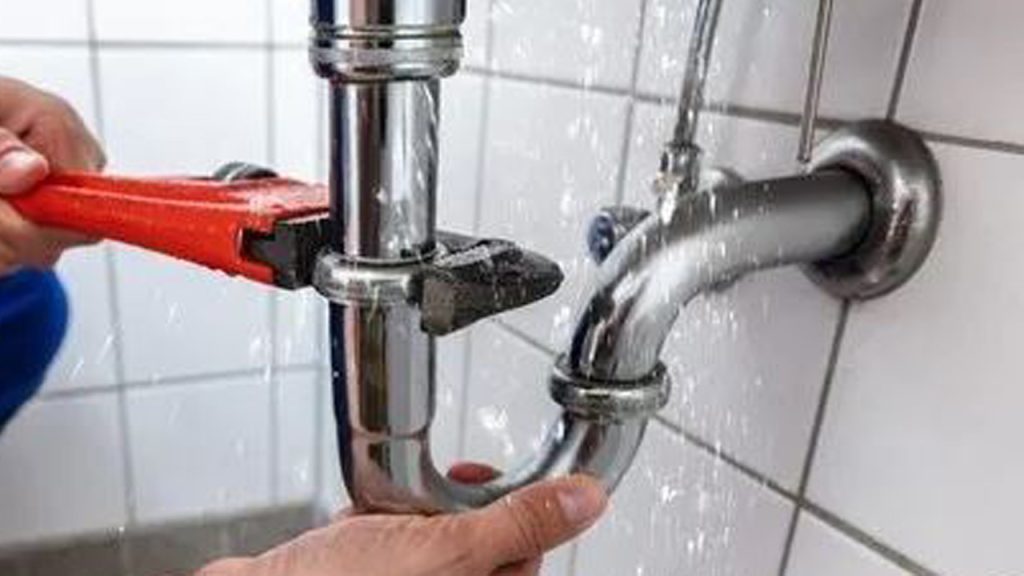How to Loosen Tight Plumbing Fittings: Easy Tips and Tricks
If you’re dealing with a pesky pipe in the kitchen or a troublesome connection in the bathroom, our step-by-step guide will give you the confidence to tackle the problem head-on.
Using simple tools and a little know-how, you’ll be able to loosen even the most stubborn plumbing fittings. We’ll walk you through the process, from identifying the type of fitting you’re dealing with to using the right amount of force to loosen it without causing damage.

Say goodbye to expensive repair bills and take control of your plumbing problems with our easy-to-follow instructions. Get ready to become the go-to DIY plumber in your household and save yourself time, money, and frustration.
Tight Plumbing Fittings
Before we dive into the techniques and tools needed to loosen tight plumbing fittings, it’s important to understand what causes them to become tight in the first place. Plumbing fittings are designed to create a watertight seal, ensuring that water doesn’t leak out of pipes or connections. These fittings can become tight due to factors such as corrosion, mineral build-up, or improper installation.
Tools and Materials Needed
To successfully loosen tight plumbing fittings, you’ll need a few basic tools and materials. Here’s a list of what you’ll need:
Adjustable wrench: This versatile tool will allow you to grip and turn fittings of different sizes.
Pipe wrench: If you’re dealing with larger pipes or fittings, a pipe wrench will provide you with the extra leverage needed to loosen them.
Pliers: A pair of pliers can come in handy when dealing with small or hard-to-reach fittings.
Teflon tape: This thin tape is used to create a watertight seal when reassembling plumbing fittings.
Penetrating oil: This special lubricant can help loosen tight fittings by reducing friction and corrosion.
Make sure you have these tools and materials ready before you begin tackling your plumbing issue.
Here’s another post you might find useful: What is Sanitary Fittings in Plumbing?
Preparing to Loosen Tight Plumbing Fittings
Before you start loosening the fittings, it’s essential to take a few preparatory steps to ensure a smooth process. Here’s what you need to do:
Turn off the water supply: Locate the main water valve and shut it off to prevent any water from flowing while you work on the fittings.
Clear the area: Remove any objects or clutter around the fittings to give yourself ample space to work.
Protect the surrounding area: Place a towel or bucket underneath the fittings to catch any water that may drip during the process.
By taking these simple steps, you’ll create a safe and clean workspace for loosening the tight plumbing fittings.
Techniques for Loosening Tight Plumbing Fittings
Now that you’re ready to get started, let’s explore some effective techniques for loosening tight plumbing fittings. Remember, it’s crucial to use the right amount of force to avoid damaging the fittings or pipes. Here are a few techniques to try:
Use an adjustable wrench
Grip the fitting firmly with an adjustable wrench and turn it counterclockwise (left) to loosen it. Apply steady, even pressure, and avoid using excessive force.
Apply heat
If the fitting is still stubbornly tight, you can use heat to expand the metal and make it easier to loosen. Use a heat gun or a hairdryer to warm the fitting for a few minutes before attempting to loosen it.
Use a pipe wrench
For larger or more stubborn fittings, a pipe wrench can provide the extra leverage needed to loosen them. Place the pipe wrench around the fitting and turn it counterclockwise with steady pressure.
Take breaks if you’re struggling with a particularly tight fitting. Applying excessive force can lead to stripped threads or even breakage, so it’s important to be patient and persistent.
Using Heat to Loosen Tight Plumbing Fittings
When traditional techniques fail to loosen tight plumbing fittings, applying heat can be a game-changer. Heat causes the metal to expand, breaking the grip of corrosion or mineral build-up. Here’s how you can use heat to your advantage:
Safety first
Before you start, ensure that the area around the fitting is clear of any flammable materials. Keep a fire extinguisher nearby, just in case.
Choose your heat source
You can use a heat gun or a hairdryer to apply heat to the fitting. Hold the heat source about 6 inches away from the fitting and move it around to evenly distribute the heat.
Apply heat gradually
Start by heating the fitting for a few minutes, then try loosening it with a wrench. If it’s still tight, continue applying heat for another minute or two before attempting to loosen again.
Protect your hands with gloves and be cautious when working with heat. If the fitting doesn’t loosen after several attempts, it’s time to move on to the next technique.
Lubricants for Loosening Tight Plumbing Fittings
If the fittings are still refusing to budge, it’s time to bring in some lubrication. Applying a lubricant can help reduce friction and corrosion, making it easier to loosen the tight plumbing fittings. Here are a few common lubricants you can try:
Penetrating oil
This specialized lubricant is designed to seep into tight spaces and break down rust and corrosion. Apply a liberal amount of penetrating oil to the fitting and let it sit for a few minutes before attempting to loosen it.
WD-40
This multipurpose lubricant can also be effective in loosening tight fittings. Spray WD-40 onto the fitting and let it sit for a few minutes before attempting to loosen it.
Common Mistakes to Avoid When Loosening Tight Plumbing Fittings
While loosening tight plumbing fittings may seem straightforward, there are a few common mistakes that can lead to further damage. Here’s what to avoid:
Using excessive force
Applying too much force can strip threads, break pipes, or damage fittings. Be patient and apply steady, even pressure.
Not using the right tools
Using the wrong tools can make the job more difficult and increase the risk of damage. Make sure you have the appropriate wrenches and pliers for the job.
Forgetting to turn off the water supply
Failing to turn off the water supply can lead to a messy situation if a fitting unexpectedly loosens. Always shut off the water before starting any work.
By avoiding these common mistakes, you’ll increase your chances of successfully loosening tight plumbing fittings without causing further issues.
Troubleshooting Tips for Stubborn Fittings
Sometimes, despite your best efforts, a fitting may still refuse to loosen. When you encounter a stubborn fitting, try the following troubleshooting tips:
Apply more heat
If you’ve already used heat but the fitting remains tight, try applying heat for a longer duration. Be cautious not to overheat the surrounding area.
Use a pipe wrench
If you’ve been using an adjustable wrench, switch to a pipe wrench for more leverage. The added torque may be enough to break the grip of the fitting.
Seek professional help
If all else fails, it may be time to call a professional plumber. They have the experience and specialized tools to tackle even the toughest plumbing fittings.
When to Call a Professional Plumber
While loosening tight plumbing fittings is a manageable task for most homeowners, there are instances when it’s best to leave it to the professionals. Consider calling a plumber if:
- You’re unsure about the type of fitting or the appropriate technique to use.
- The fitting is in a hard-to-reach location or requires specialized tools.
- You’re dealing with a complex plumbing system or multiple fittings that need attention.
It’s better to seek professional help than risk causing further damage that could lead to costly repairs.
Conclusion
Loosening tight plumbing fittings doesn’t have to be a daunting task. With the right tools, techniques, and a little patience, you can tackle these common household problems like a pro. By understanding the causes of tight fittings, preparing properly, and using the appropriate techniques, you’ll be able to confidently loosen even the most stubborn plumbing fittings.
Work carefully and avoid applying excessive force. If you encounter a fitting that won’t budge, try using heat or lubricants to break the grip of corrosion or mineral build-up. And if all else fails, don’t hesitate to call a professional plumber for assistance.



